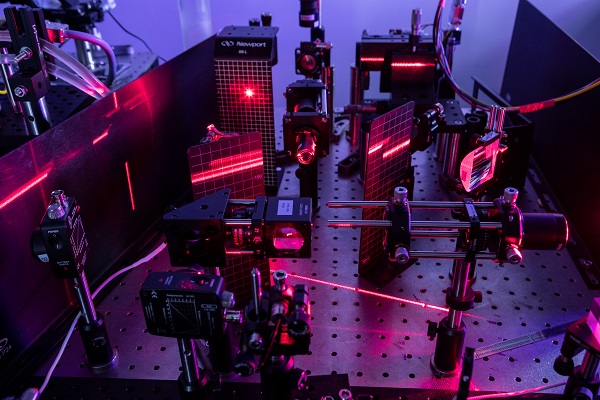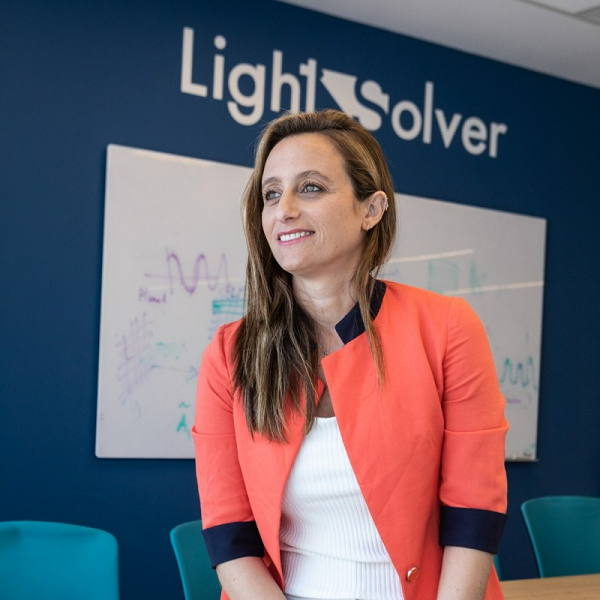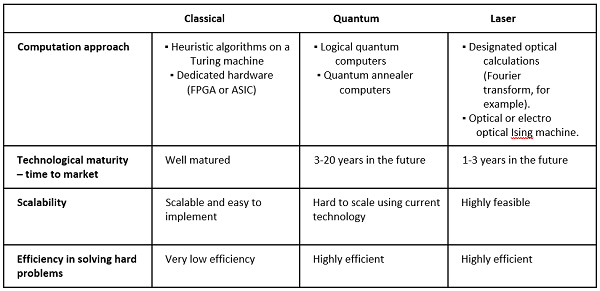By Ruti Ben-Shlomi, CEO and Co-founder, LightSolver
 There’s a lot of excitement around exascale-class supercomputing and the possibilities of quantum computing, but there’s an emerging alternative advanced computing paradigm that transcends the limits of classical HPC and is more practical than quantum computing for complex, multivariable problems.
There’s a lot of excitement around exascale-class supercomputing and the possibilities of quantum computing, but there’s an emerging alternative advanced computing paradigm that transcends the limits of classical HPC and is more practical than quantum computing for complex, multivariable problems.
Called the laser-based processing unit (LPU), this entrant in the race for computing primacy has the potential to jump to the head of the pack for solving the hardest optimization challenges.
Complex Challenges Demand Immense Computational Power
Before getting into how LPU technology works, let’s quickly discuss the problem at hand. Industries such as finance, supply chain/logistics, and manufacturing need new solutions to complex multi-variable challenges ranging from optimizing financial portfolios and trading, to improving decision-making related to vehicle routing and warehouse optimization, as well as scheduling and assembly line balancing.
This involves finding the best possible outcome from a set of possible solutions that satisfy certain constraints (“constrained optimization”). For “NP-hard” optimization challenges, the time it takes to find a solution grows exponentially with the size of the problem, as determined by the number of variables or constraints. Hard optimization problems all have one thing in common: solving them requires substantial computational power.
The Limitations of Quantum and Supercomputing
Today, many optimization problems are addressed by classical computers using approximation methods, such as heuristic algorithms. Unfortunately, the solutions tend to be poor in quality, and the time-to-solution increases with the problem size. To combat this, a large number of parameters are often omitted to reach a solution within a reasonable amount of computation time, making the results inconclusive. Even the most powerful supercomputers, whose performance exceeds a hundred quadrillion FLOPS can reach their computation limit.

LightSolver LPU in the lab
As for quantum computers, they are still immature, and the day when they will be affordable and scalable is far off. There are a number of quantum modalities, each with engineering challenges, e.g. requiring an ultra-high vacuum, specialized components, and ultra-cold and complex stabilization systems. In spite of these extreme conditions, the qubit continues to interact with its surroundings, making it susceptible to errors, reducing reliability and accuracy.
Quantum annealers have also been commercialized. However, these room-sized devices cost $15 million and require the same extreme operating conditions as quantum computers. And due to their low connectivity, they cannot scale-up easily to solve challenging real-world problems.
The Laser-based Processing Unit

Ruti Ben Shlomi, LightSolver
The laser-based processing unit is a new paradigm for computing that uses lasers to perform calculations. It offers several advantages over traditional computing methods, including increased speed and improved accuracy. LPU’s are small, can be built with commercially available components, and are thus easier to bring to a mass market.
The LPU utilizes all optical-coupled lasers that require no electronics to compute, enabling it to be as small as a traditional desktop computer while providing scalability, low power requirements, and room temperature operation. It leverages the ability of lasers to interfere and thus fulfill all the constraints of a given problem.
To begin, the user of the LPU formulates what’s referred to as a quadratic unconstrained binary optimization (QUBO) problem, a mathematical formulation aimed at finding the optimal combination of variables that satisfy certain constraints. The problem’s conditions are then mapped into “obstacles” within the optical path in which the lasers operate.
Due to the wave nature of the lasers and the proprietary mapping, the laser beams converge into the desired solution. The solution is then measured and translated back to the business language of the user. Through this method, optimization problems can be solved at the speed of light, orders of magnitude faster than other current techniques.
This method encodes the optimization problem constraints in the lasers’ relative phases (“laser bits”), and the phase states interact by diffracting light from each laser to all others in a controllable manner, using a tightly coupled laser array. This design allows for full connectivity between all lasers, facilitating pairwise all-to-all spin interactions on a desktop-size device, operating at room temperature while requiring a modest amount of energy.
However, unlike quantum, the device is portable and does not suffer from environmental sensitivity or need error correction protocols. Furthermore, the laser-based supercomputer can scale significantly without increasing the size of the device. With the LPU, each variable is a laser spin. This also is different from quantum computers as each logical spin is also the physical spin, so it does not suffer from overhead spins that need to be allocated.

The Future of Supercomputing
A recent experiment proved that lasers can compute a hard problem without the need for electronics. The 40-laser bit processor performs calculations and has shown promising results in solving complex optimization problems, exhibiting a two orders of magnitude improvement in speed compared to a powerful GPU, giving early indication that LPUs have massive computing potential. The new LPU paradigm utilizing existing, proven laser technology is positioned to outpace both quantum and supercomputing in the coming years.
For further reading:
-
In a head-to-head challenge, the LPU achieved 2X-1,000X faster time-to-solution for solving Max-2-SAT problems compared to a leading deep learning solver.
-
Taking on the “3-Regular 3-XORSAT Challenge,” the LPU solved the problem in polynomial time, while classical and quantum computers solved it in exponential time. Although this paper did not undergo peer review, the research was conducted by third-party researchers from University of Southern California.
-
A quantum-inspired algorithm was used with the LPU for sparse coding that resulted in more accurate estimations than classical approximation methods. The quantum sparse coding paper is currently undergoing its final stages of peer review and is expected to be published soon by this journal: https://www.springer.
com/journal/42484.
Ruti Ben Shlomi, PhD, is a physicist and the CEO of LightSolver, which she co-founded with Dr. Chene Tradonsky in 2020 after inventing the first LPU. She received her PhD in quantum and atomic/molecular physics in 2019 from the Weizmann Institute of Science in Israel. In 2011, she received her MSc in physics from Ben-Gurion University of the Negev after designing and building an ultracold atoms system from scratch. Between degrees, Ruti served as a process engineer for Intel.



